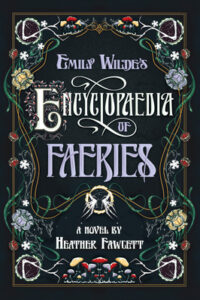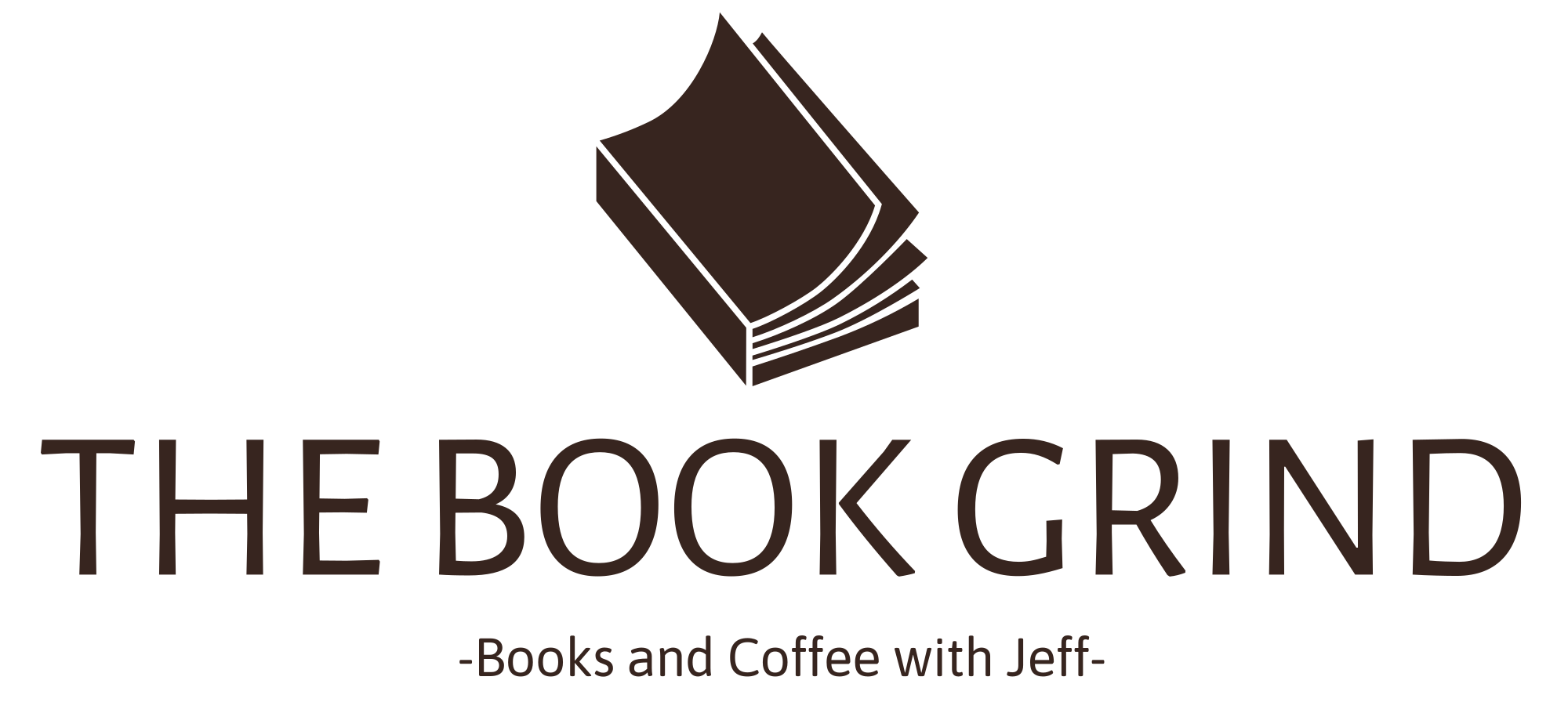 Emily Wilde's Encyclopaedia of Faeries by Heather Fawcett
Emily Wilde's Encyclopaedia of Faeries by Heather Fawcett Series: Emily Wilde #1
Genres: Adult, Adventure, Fantasy, Fiction, Folklore, Historical Fiction, Magic, Romantasy
Published by Del Ray on January 10, 2023
Format: Hardcover
Pages: 317

A curmudgeonly professor journeys to a small town in the far north to study faerie folklore and discovers dark fae magic, friendship, and love in the start of a heartwarming and enchanting new fantasy series.
Cambridge professor Emily Wilde is good at many things: She is the foremost expert on the study of faeries. She is a genius scholar and a meticulous researcher who is writing the world's first encyclopaedia of faerie lore. But Emily Wilde is not good at people. She could never make small talk at a party--or even get invited to one. And she prefers the company of her books, her dog, and the Fair Folk.
So when she arrives in the hardscrabble village of Hrafnsvik, Emily has no intention of befriending the gruff townsfolk. Nor does she care to spend time with another new arrival: her dashing and insufferably handsome academic rival Wendell Bambleby, who manages to charm the townsfolk, get in the middle of Emily's research, and utterly confound and frustrate her.
But as Emily gets closer and closer to uncovering the secrets of the Hidden Ones--the most elusive of all faeries--lurking in the shadowy forest outside the town, she also finds herself on the trail of another mystery: Who is Wendell Bambleby, and what does he really want? To find the answer, she'll have to unlock the greatest mystery of all--her own heart.
Emily Wilde’s Encyclopaedia of Faeries is a curious case of a lot of great ideas implemented in a slow and laborious manner. Incorporating aspects of historical fiction, fantasy, light romance and folklore, the elements were there for what many positive reviewers have describe as a cozy and enchanting read. Unfortunately the narrative and tone was not for me and I alternated between struggling to stay interested in the story and being baffled at seemingly random lurches in unexpected directions.
The main highlight for me and the area Heather Fawcett was consistently strong in was the folklore aspect layered into the story. Emily Wilde’s Encyclopaedia of Faeries is full of lengthy and detailed stories told by the villagers of Hrafnsvik, encounters with the Fair folk, and even recapped from Emily’s own research. These stories placed in self-contained chapters are often longer than non-folklore chapters given that the story is presented via Emily’s written journal, some entries being extremely short and uneventful. These stories all have some sort of theme that connects to whatever Emily is experiencing at the time, and the imaginative quality of these tales often surpasses the novel’s actual story itself (like modern Grimm fairy tales).
The interest within these stories is also heightened due to how slow, tedious, and bland the main story can be. This novel has an unfortunate tendency to flip flop between large stretches of quiet, humble rural living and exploration, then suddenly throwing the story into action with lack of transitions. The slower chapters can mostly be summarized as Emily bumbling around the rural village, struggling to do basic country living necessities, verbally sparring with her academic coworker Wendell Bambleby, and doing a bit of research in the field. I personally found these sections to be extremely slow, boring, and quite repetitive. Based on the book’s synopsis and Emily’s credentials as an expert in the study of faeries, I was disappointed in the low amount of actual research and scholastic work she does. Apart from one common fae she encounters near her cabin lodging and one unusual child in the village, Emily doesn’t actually do any research on her own and her only discoveries are all done through her own fumbling or them falling right into her lap. At times her scholastic background felt like it was only included as an explanation to why she’s so poor at social interactions (a tired and lazy academia trope in my opinion) and for her to pull out random fae tidbits and world-building points out of thin air, as opposed to these being incorporated organically into the story. This novel also follows that modern trend of using excessive footnotes that often include unnecessary detail or those that could’ve been written into the main text itself with slight editing.
In between the numerous slow chapters, the novel would suddenly break into more serious and action-based chapters that felt out of place in the otherwise simple story. Without giving away any major spoilers, Emily’s encounters with the “Hidden Ones” feels herky jerky and rushed, going from no knowledge and previous appearances, to throwing Emily right into the heart of a festival gathering and icy kingdom power struggle. While I appreciated the direction the story was going and the plot advancements that I felt were desperately needed, the transition seemed almost non-existent and each step in that direction felt increasingly random and baffling. I spent the majority of the last third of the book wondering why the rest of the book wasted its pages on random rural slice of life moments when it could’ve spent more time setting up its chilly and more ambitious High folk chapters. I suspect this lack of setup and abrupt shift contributes quite a few negative reviews that preferred the slow exploration chapters compared to the later kingdom-focused chapters. These chapters also felt incredibly rushed and the escalating conflict in the frozen forest just sort of ends in an abrupt and anti-climatic manner. The actions and resolution of the King at the novel’s end frankly doesn’t make sense and conflicts with his own motivations at the start of the sequence. A major threat to the village is also avoided simply by the villagers asking the fae to stop it who are notoriously difficult to appease. This felt like a copout and lazy way of just cutting short all of the novel’s loose ends.
Like the story, I thought the novel’s characters were good on paper but the execution was also not to my taste. Emily’s character was incredibly off-putting to me but not due to her personality or scholastic morals. Beyond finding social interactions difficult, she repeatedly comes off as a stuck up know-it-all yet doesn’t display either book smart or field smart knowledge to back it up. The novel’s story is basically Emily making an absolute oaf of herself and offending everyone and everything around her, all while also being a bit of a damsel in distress city girl for the villagers or Bambleby to save her. For a character who is intended to be smart, she suffers from the stupid protagonist syndrome where the main character consistently makes the obvious worst choice repeatedly. And that can be excusable if the book demonstrated or showed how accomplished Emily can be when she’s in her element, but the only proof of that is Heather Fawcett repeatedly telling the reader she is an expert and professional rather than actually showing it much.
Popular, entitled, and pretty boy Bambleby felt better executed and more well-rounded, though a good deal of that could be chalked up to the added humor his presence brought. I was about to DNF this book fifty pages in and only kept going due to Bambleby’s introduction that added more energy to the story. Emily and Bambleby’s light bickering was another bright spot for me with a pretty good banter and their differences in morals to be interesting. Perhaps I should admit I also experienced a good deal of schadenfreude whenever Bambleby would drag Emily and make fun of her due to how unlikeable and unintelligent I found her. While I found their character chemistry to have good material to work with, the romance aspect also felt underdeveloped and rushed. Apart from slightly too long glances and a constant irritated fascination with his wavy blonde hair, there’s not a whole lot of romance in the story despite it being a main selling point of the novel. An unexpectedly dangerous encounter suddenly causes Emily to do a 180 on her feelings (both romantically and towards the folk and villagers) which felt jarring and poorly planned out. The entire romance subplot felt forced and rushed, making its intended implication during the frozen kingdom chapters all the more silly as the drama doesn’t feel earned. Characters outside of the two main characters were mostly forgettable, particularly the adult villagers who I often struggled to remember who was who due to having relatively similar names and similar characterizations.
At times, Fawcett’s visual imagery of Hrafnsvik and its frozen countryside was beautiful, especially when Emily is out in nature attempting to do a bit of research or when Emily first enters the land of the Hidden Ones. As previously mentioned, the folklore aspect and storytelling within those tales was compelling, something the main story could’ve used more of. Unfortunately outside of those two areas, the rest of the writing style and tone didn’t really work for me. The story consistently felt overwritten and unnecessarily indirect, as if to give the novel a scholastic edge considering the book is written from the perspective of Emily’s journal. The end result however felt overly wordy and tiring to read, with a great deal of focus on the mundane rather than plot elements or character growth. While I found the fae storyline to be decent when the book chose to focus on it, I felt like there simply wasn’t enough plot to justify a 300+ page book. The writing felt like it was constantly trying to pad its core plot with unnecessary fluff (what some have found to be cozy) when it could’ve instead addressed the plot crunch at the end of the book. The world-building also felt kind of sporadic and random with new elements being thrown out arbitrarily. I found it impressive how many different historic folklore stories and cultural elements Fawcett was able to incorporate in the Emily Wilde’s world, but the actual world of the High folk kingdom felt like it was being made up on the fly and I still have very little understanding of just what Cambridge or academia even knows about them. This will obviously be explored and built on in subsequent novels but the world-building within this book felt inadequate in the areas that count and excessive in details that have little to do with the story.
As a whole, Emily Wilde’s Encyclopaedia of Faeries was a complete miss for me and a book I probably should’ve have DNF-ed if I wasn’t such a stubborn and persistent reader, but there’s a lot to like for those looking for a somewhat cozy read. The novel had all the right pieces but some unusual focal choices and the overwritten yet sparse story left me severely underwhelmed, resorting to skimming in places just to finish it. However on the bright side, I saw a lot of promising signs that the sequel novel Emily Wilde’s Map of the Otherlands is heading in the right direction with more world-building and research (though any focus on Brambleby is a smart move), and the closing tale of the Golden Ravens in this book had more foreshadowing and interest than most of the rest of the novel. I will not be continuing this series but it sounds like it will become far more rewarding and developed (the synopsis of the recently announced 3rd novel sounds like the most interesting one yet!) but if you like slower-paced reads and fae-focused fantasy stories, let me know how it ends!
